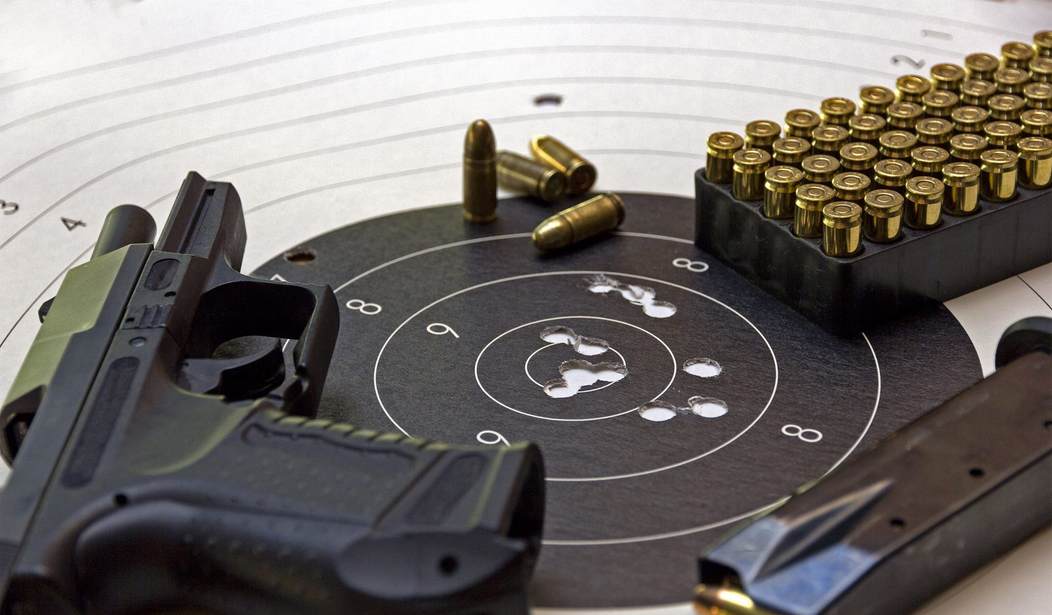So you’ve got a concealed carry license? That’s just the beginning. In order to be fully prepared to defend yourself (within the bounds of the law), you will need a lot more.
Last week, I wrote “Fashion and Function: Six Tips for Carrying a Concealed Handgun.” That article was about the necessary clothing and holster considerations you need to make to carry your concealed firearm. But there is more you need to know and do to prepare — a lot more. Here are four tips you will need to make good use of your concealed firearm.
1. Get the right gun.
Take your time and get the right gun for you. I know that sounds pretty obvious. But what I mean is do not settle for some gun that was passed down to you, or something you got because it was a “great deal.” Make sure the pistol you purchased is a quality firearm that is dependable. Good quality names such as Glock, Smith & Wesson, Ruger, Sig Sauer, Springfield, Heckler & Koch, Kahr — these are some of the top quality brands I usually recommend. Remember, you get what you pay for.
Also, make sure the caliber of the gun is something you can handle. (Some gun stores have a range where you can rent various caliber firearms and test them out.) Some people are more fragile than others, and the biggest thing they can accurately shoot is a .22 caliber. That is fine. A .22 caliber gun is better than no gun.
Don’t let people pressure you into buying a gun that shoots .40 caliber or .45 ACP if you feel that you cannot adequately control it. While it may be tough to bring down a determined foe with a .22, they will still die if you shoot them in the head with that caliber. I usually recommend nothing smaller than the .380 Auto, but whatever you can accurately shoot and put rounds on target is fine.
Should I shoot a revolver or a semi-auto? Again, whatever you can accurately shoot and feel the most comfortable with. Revolvers are great in that it is rare for them to malfunction, but they have fewer rounds to shoot (usually only five or six), and they generally take more time to reload. Many semi-autos can throw out a lot of lead real fast, and you can reload them in a heartbeat, but they can jam. Pick one and get real good with it.
2. Train, train, train. You must train.
So you got your concealed carry license. Congratulations! And now you’re going to carry a loaded gun around for protection. But if you do not train on a regular basis, you are asking for trouble. Shooting is a depreciable skill. That means, if you don’t practice and practice and practice, you will lose the skill. And in a defensive encounter you MUST shoot accurately or innocent lives may be harmed.
Everyone is pressed for time, so I recommend you put on your calendar at least one day a month to go to the range. Shoot at least two boxes of ammunition (100 rounds total). At least. Of course, the more you practice, the odds are the better you will become.
Next Page: Training at the range is not enough.
3. Training at the range is not enough.
Buy some “snap caps” (fake ammo) at the gun store. They are usually soft aluminum cartridges with an inert plastic primer that allows you to put them in your gun and “shoot” without anything going off. They will not harm your gun at all, and you can find them in almost any kind of caliber. Use them at first in your gun and you will be able to safely train indoors.
With these snap caps in your gun you can practice loading and unloading your firearm. Then, pretend you are out of ammunition. Quickly drop the empty shell casings (if you are using a revolver) or drop that mag (as in a semi-auto) and quickly reload. Can you do it? Practice, practice, practice.
4. Move from simple to realistic situations.
Most defensive encounters are not going to happen against a stationary target. You can start by shooting at such targets, but begin to vary your range, anywhere from 10 to 20 feet (since most encounters happen at that distance) and then work on moving targets (if your range has such things).
Shoot from various stances. Some ranges allow you to shoot only from a standing position. If you can arrange it, practice accurate shooting from sitting (as in the benchrest position), kneeling, squatting, or even prone. Of course, train slowly, and with an unloaded firearm first (“dry-fire” only if your gun manufacturer says your pistol is OK with this). Then progress with snap caps. Then finally with live ammunition. (Follow ALL gun safety rules at all times!)
Eventually work your way into more complicated, realistic surroundings. Try shooting in dim light, or with loud music or sirens or flashing lights. Practice using shooting only with your non-dominant hand (how will you fight if your shooting hand is injured?). Train in reloading only with one-hand. If you have not been taught how to do this, go to your gun store and talk to a concealed carry instructor there.
Work on safely drawing your pistol from its holster, presenting it and accurately firing two well-aimed shots. (Again, I would start with snap caps in the gun and then graduate to using live ammunition.) Go slow, then gradually work on your speed — following all the rules of gun safety, of course.
Train to draw your gun from a standing position and then move to kneeling behind a low object. Or try moving from a sitting position to a standing position. Think carefully about the numerous situations you may find yourself in. If you were seated in your car, and buckled in the seat, could you safely but quickly draw your pistol and fire? Maybe you should practice that (with snap caps, of course).
A member of the U.S. military told me once: “One thing is for sure, you will not rise to the occasion. You will fall back on your training.” If you don’t train– often and realistically– you will not be able to accurately defend yourself with a firearm.
So start training!










Join the conversation as a VIP Member